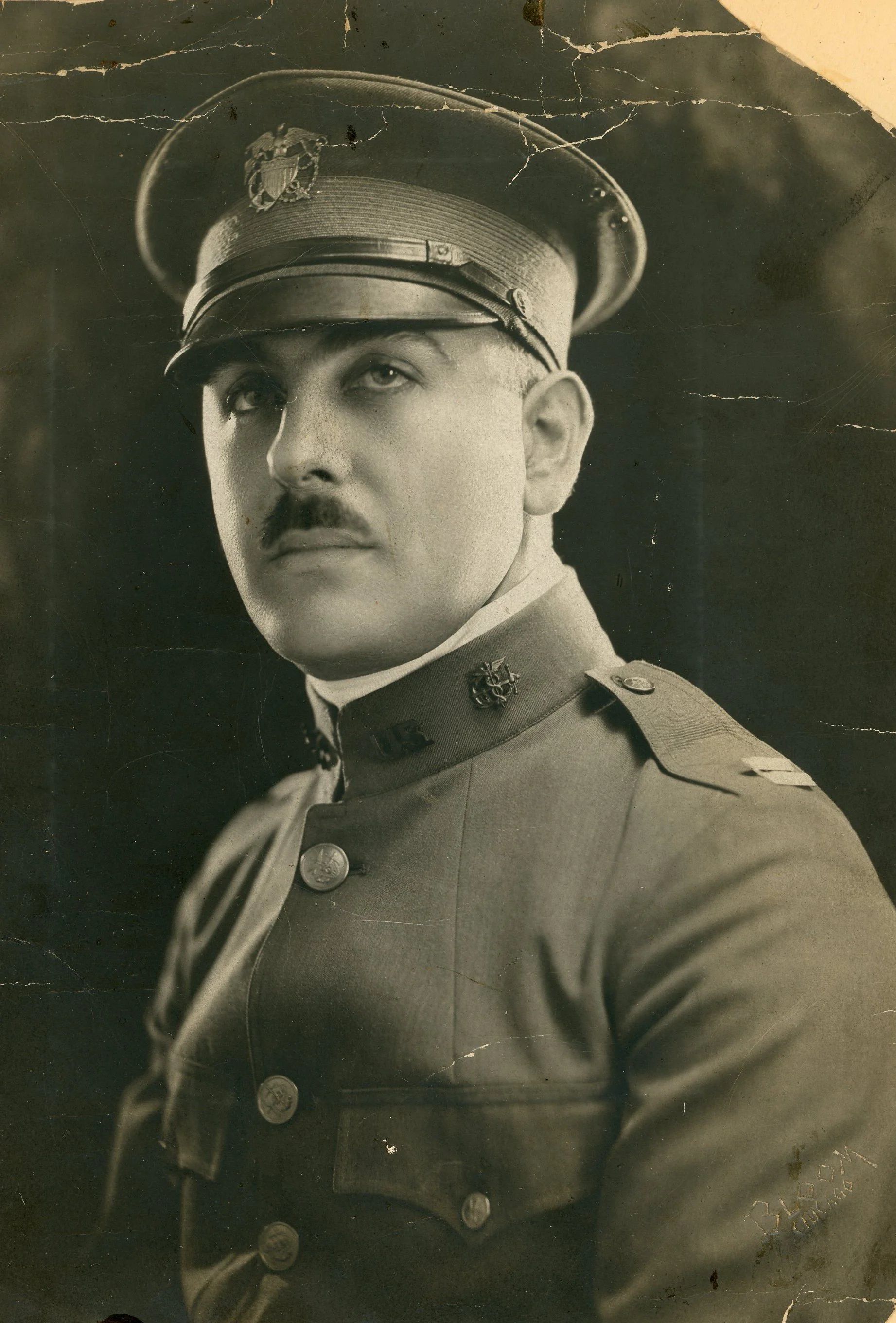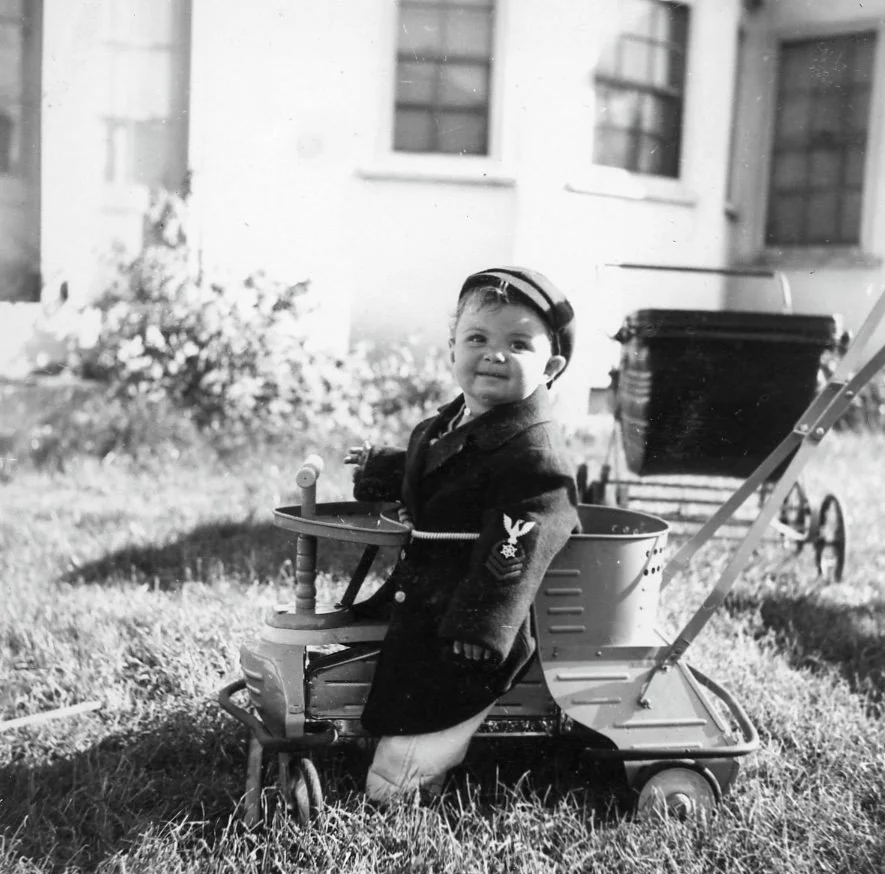The Portrait of an Heirloom: Legacy and Continuity
Sepia-toned portrait of a young Army officer in uniform after World War I, his duty still inscribed in brass buttons and cloth.
After the Armistice
Not all heirlooms are carved from walnut or upholstered in velvet. Some are stitched in wool, marked with insignia, and held forever in sepia tones. This portrait, taken in the years just after the First World War, shows a young Army officer in uniform. The war had ended, but its shadow lingered. The Armistice of November 1918 had silenced the guns after four years of trench warfare across Europe, leaving millions dead and every household touched by its grief. His posture remained composed, his expression measured, his duty still inscribed in brass buttons and military cloth.
A Life Beyond the Front
When he returned to civilian life, he carried the ethic of service with him. He became a physician, tending to the sick and to veterans whose battles did not end with peace. In his practice, the discipline once demanded by the front found its echo in the quiet rituals of healing. He later married a woman of the silent screen, an actress whose art belonged to that same early decade when America was discovering its cultural voice in flickering reels and wordless gestures. Together they bridged two worlds: the steadiness of medicine and the grace of performance, both traditions woven into a shared life.
A 1942 portrait of a young soldier in uniform, standing with poised composure on the threshold of sacrifice.
The Next Generation
Two decades later, their son inherited the same thread of duty. In a 1942 portrait, he appears in uniform with youthful poise, unaware of the sacrifice that awaited him.
After graduating from John Burroughs Junior High in 1936 and Los Angeles High School in 1938, he married his high school sweetheart on the campus of UCLA in 1943. A year later, he briefly returned to meet his newborn child before departing for Europe. He stood on the threshold of a full life as scholar, husband, and father when war summoned him to another front. In the frozen forests of the Ardennes, at the Battle of the Bulge, he was declared missing in action. For five years his wife searched for news until word came that his remains had been discovered by a German civilian. His sacrifice, like his father’s duty before him, was inscribed into history.
A Child’s Inheritance
He left behind a son of his own, a child who once wore an oversized Army coat in a photograph we have written about before. The coat enveloped him, heavy with inheritance: the absence of a father, the memory of a grandfather, and the echo of service too great for any child to carry, yet carried nonetheless. The boy himself became, in his way, another heirloom. He was living evidence of memory stitched into cloth, a reminder that absence itself can be inherited.
A child enveloped in an oversized Army coat, carrying the absence of a father and the memory of generations past. (All photographs courtesy of a private collection)
Continuity of Memory
The officer’s early portrait remains the first link in this chain. It is not merely the likeness of one man but the anchor of a family’s inheritance. His duty marked the beginning, his son’s sacrifice deepened the cost, and the child’s quiet endurance carried both forward as memory. Like a cabinet that shelters its contents long after its maker has gone, this photograph preserves presence across time, allowing the living to touch the contours of the past.
To live with such objects is to live among echoes, where wood and velvet speak as eloquently as sepia and cloth. These are not simply furnishings or images but continuations of memory, anchors of lineage, and vessels of meaning.
Acanthus Home and the Afterlife of Objects
At Acanthus Home, we know heirlooms are not only the restored antique furniture we place in luxury interiors, but also portraits, uniforms, letters, and garments children grow into too soon. They are objects that embody the afterlife of memory, where presence lingers, where stories endure, and where legacy is carried forward quietly, tenderly, and without end.
This entry stands as a companion to the story of the child in the Army coat. Together, they remind us that heirlooms are not bound to a single form but to the continuity of memory itself, woven across generations, surviving in wood and wool, velvet and sepia, presence and absence.
In our collection, each restored piece is offered in this same spirit, not as décor alone but as an heirloom awaiting its next chapter. To welcome such an object into your home is to honor the continuity of presence, the duty once carried, the sacrifice remembered, and the inheritance entrusted to those who remain.
In honoring such heirlooms, we honor the artistry of memory itself. To restore furniture is not only to preserve craft, but to carry presence across generations. Preserved within a private collection, these photographs, like the furniture we restore, are testaments to the continuity of memory, entrusted to time and kept alive by those who remain.
Continue your journey through The Afterlife of Objects. Explore our restored collection and c, where memory endures in wood, velvet, and design—each piece and each story awaiting its next keeper.


